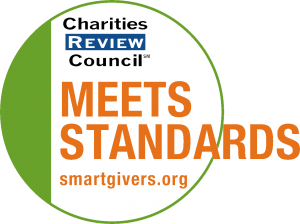Impact and Programs
Accomplishments
In 2023, BBBS and 1,400 volunteer mentors partnered with 2,230 youth and their families. BBBS measures its effectiveness using Big Brothers Big Sisters of America’s Youth Outcomes Survey to measure the social, emotional and academic development of youth. Our latest data show that youth report strong results in key developmental areas that lead to long-term success. For example, 90% of surveyed youth reported maintaining or strengthening educational expectations for the future, such as finishing high school and attending college; 87% reported maintaining or strengthening their level of social competence with peers and emotional regulation skills; and 93% of surveyed youth reported having a special adult in their lives who encourages and cares about them. BBBS stakeholders also report a high level of satisfaction. Parenting adults are pleased with BBBS programs – 97% report that they would recommend the program to a friend. Young people value their engagement, with 93% affirming that the relationship with their Big is very important to them. Volunteers are positively impacted by mentorship too – 95% of Bigs report that they have had a fun and positive experience.
Current Goals
Our goal in 2024 is to partner with 2,300 young people and their families through comprehensive mentorship programs. BBBS is also focused on launching our Strategic Plan2023-2026, based on feedback from 700+ stakeholders to inform our direction over the next few years. The plan will deepen our reach, grow impact, and create engaging, connected, youth-driven journeys to help young people achieve future success. We will invest in listening to youth as experts of their own lives, supported by a community of caring adults and greater partnerships with historically underrepresented communities. We know that everyone benefits when we amplify these voices. Priority focus areas include community engagement; building strong youth pathways; improved participant interactions and customer serve; recruitment and retention focused on volunteers, staff and board members who reflect and value the youth we serve; and data and impact to drive continuous learning and improvement.
Community or Constituency Served
Our professional staff partner with youth ages 5 to 21 and their families as well as more than 1,400 volunteers. Young people served are diverse, including 85% of youth who identify as BIPOC. More than 80% of young people served live in households that are low-income.
Parenting adults are an important part of the match relationship, supporting success and providing important insight into the youth/mentor match. BBBS engages youth and families through self-referrals, community partnerships and schools.
Youth in BBBS programs are diverse. In 2023, 49% were Black, 13% White, 10% Hispanic/Latinx, 9% multiracial, 7% Asian, 3% American Indian, and 9% another category. Ages range from 3 to 21, with most youth in the 10 to 15 range. Fifty-three percent identified their gender as female, 46% as male, and 1% another category. Families speak English, Hmong, Spanish and Somali.
Geographic Area Served
BBBS serves youth and families from across the Twin Cities metro area (including Hennepin, Ramsey, Washington, Anoka, and Dakota Counties), with a majority residing in Minneapolis and St. Paul.
